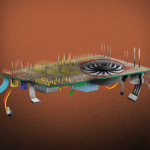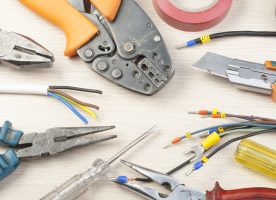Anybody who was born in or after the 90s would laugh as they read this – a television still working after twenty years? Is this some sort of joke?! But many of us who have grown up in pre- 90s era, know that electronics were meant to last for decades, if not for a lifetime. If it did not, it meant that you had not handled it well, that you had ‘mistreated’ it. In the last two decades, especially in the last one, this thinking has done a complete U-turn. Today, electronics are expected to last barely for a few years. Ideally, technology should have made products better. One of the parameters of ‘better’, at least in my book, is ‘long-lasting’. But that did not happen. So, whether it is a small gadgets like mobile phone, electric shaver and mixer grinder, or large appliances like washing machine, television and air-conditioner- all of them are now being designed to last for limited period and are thrown as soon as they stop functioning.
How did this ‘Planned Obsolescence’ or ‘Design for Dump’ happen and why? What are its repercussions?
The concept of ‘Planned’ or ‘built-in’ obsolescence is almost a century old. It was first written about in 1928 by the American marketing pioneer Justus George Frederick. According to an article in the Guardian, he stated that “it was necessary to induce people to buy an ever-increasing variety of things, not in order to use them but to activate commerce and discard them after a short period of time.” And his idea is probably what defines electronics today! Any electronics made today is not meant to last for more than few years. Shockingly, according to EU research, the average lifetime of desktop printers is a mere five hours and four minutes of actual printing time, clearly showing that it is no longer about how you handle an electronic gadget. You can give it royal treatment, but it is on its natural deathbed within hours of its birth!
There are different ways to make gadgets deliberately obsolete; through its quality, its functionality, and/or its appearance. One of the common methods used by the electronics industry ‘designing for limited repair’. Critical components, that are commonly subject to wear and tear during use, are made so expensive to replace that it is cheaper to buy a new product. Even earlier, in the 80s, moving parts were expected to wear, but repair was an automatic choice. If your refrigerator or mixer-grinder broke down, the first step was to get a technician to repair it. But today, that option is probably not an option at all !
Today, the cost of repair in most cases is at with buying a new product and hence that is the common route that consumers take. Phasing out spare parts is another trick of the trade. Try to buy a charger for your old laptop and you will likely to hit a dead end. And sadly, chargers are constantly changed, so that they do not fit older gadgets.
Another way is to design electronics to deteriorate quickly is to use inferior materials in critical components; plastic materials that deteriorate easily, screws that are undersized and break down after a limited time, etc.
But one of the most common tricks employed for planned obsolescence – especially in information technology electronics – is ever-changing software. This spells doom for fully functional devices, leaving many of us with household drawers filled with old devices. We can neither throw them away since the gadgets are still working, nor can we keep using them, since they are being phased out. A recent example is Apple’s strategy of slowing down older iPhone models, by using compulsory software updates. In France, where planned obsolescence is illegal, Apple was slapped with a fine of 24 million Euros for “deceptive commercial practice[s] by omission”.
This deliberate strategy, of ensuring that a particular version of electronics will become out of date or useless, within a fixed time period, ensures that consumers will seek replacements in the future. This guarantees demand for new gadgets, increasing the bottom line for the manufacturers. The result is a growing trash pile of e-waste. A record 53.6 million metric tonnes (Mt) of electronic waste was generated worldwide in 2019, up 21 per cent in just five years, according to Global E-waste Monitor 2020.
Though there are e-waste regulations in a large number of countries, most of them focus only on proper collection and recycling of this toxic, resourceful trash. But recycling is only a small part of the solution. Recycling can get some percentage of the raw materials back in the productive cycle but there are still a lot of resources lost and never recovered. Especially in developing countries like India, where recycling is primarily done by informal sector, in the most rudimentary ways, the risk of health hazards as well as loss of valuable resources is huge. In these times of focus on depleting natural resources, planned obsolescence is certainly a big villain. Longer-lasting gadgets and refurbishing or repair, which can extend life of the products or components, are far more sustainable strategies in the long term.
Till some years back and to a small extent even now, repair of anything and everything was a common thing in countries like India. From broken sandals to
Un-repairable gadgets are probably a true representation of our current ‘throw-it-away’ society. The model of a consumerism-driven society, that functions as an engine for economic development, is no longer sustainable and the pushback is building. Martine Postma is a founder of the international network of Repair Cafés that began in 2009, in her native Amsterdam. Volunteers meet people who arrive with items that needs fixing, and in the process, the consumers learn about bringing products back to life. This network now extends to 36 countries, including its first outlet in India, in our IT capital, Bengaluru. Meanwhile, the European Union is working on legislation that will force companies to produce electronics that are “recyclable, repairable and designed to last longer” as part of a plan to halve waste across the EU by 2030. Many countries have made strides in product reparability as a way to slow obsolescence and reduce waste.
Though India is far behind in terms of bringing in any formal framework to promote mending of electronics, repair culture has been around in India for ages. From a bucket to an expensive watch to electronics, the informal repair shops could mend anything and everything and had what is termed sometimes as ‘jugaad’. We even had mobile repair people, who would go around in cycles in colonies and fix old items. As a society, repair and refurbishing was considered a ‘normal’ thing and not really looked down upon, as it is now. Though repair shops still function in every part of the country, the skill of repairing and refurbishing is dying slowly. The Repair café in Bengaluru is trying to bring that back in some measure.
The Centennial Light, an incandescent bulb located inside the Fire Station in Livermore, California, is still faintly shining – 119 years after it was switched on. Its light represents hope in this darkness; hope that it is possible to change this trend of a “throw-it-away” society. Surely, if an incandescent bulb made with 19th Century technology can last so long, why not 20th and 21st Century gadgets?













